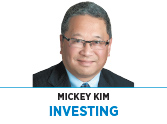Subscriber Benefit
As a subscriber you can listen to articles at work, in the car, or while you work out. Subscribe Now Assume I told you at the beginning of this year that the S&P 500 index had an average annual return of 8.8 percent for the 38-year period from 1980 to 2017. I then asked you to provide a range of returns you expected the S&P 500 to provide over the next 12 months, between ____ percent and ____ percent.
Assume I told you at the beginning of this year that the S&P 500 index had an average annual return of 8.8 percent for the 38-year period from 1980 to 2017. I then asked you to provide a range of returns you expected the S&P 500 to provide over the next 12 months, between ____ percent and ____ percent.
If you’re like most folks, you’d focus on the 8.8 percent average annual return and make a mentally wide cushion of plus or minus 4.4 percentage points (half the average), to come up with a range of 4.4 percent to 13.2 percent.
That might seem perfectly reasonable, but by focusing or anchoring on the 8.8 percent average annual return, you probably wouldn’t realize that actual calendar-year returns over the 38 years were almost never even close to the average. In fact, calendar-year returns were between 4.4 percent and 13.2 percent in only seven of the 38 years (i.e. less than 20 percent of the time).
According to J.P. Morgan, calendar-year returns ranged from 34 percent to -38 percent. Further, despite an average intra-year peak-to-trough drop of 13.8 percent, returns were positive in 29 of 38 years. While nine of 38 years (i.e. almost 25 percent) were negative, I’m guessing few of you had a negative (and certainly not -38 percent) as the bottom end of your expected range.
Behavioral economists believe we often act emotionally and irrationally and are affected by all sorts of cognitive biases. They refer to the cognitive bias of focusing on a reference point, like historical average returns, as anchoring.
Investors crave certainty, and having a tight range of expected outcomes around the anchor creates an illusion of certainty. The problem with anchoring is, it fails to recognize the extreme volatility inherent in stocks. So, when the market encounters a bout of perfectly normal volatility, like we’ve experienced over the past several weeks, investors can become unnerved and abandon their long-term strategy.
So what’s an investor to do? First, recognize and accept that the range of possible outcomes is much wider than you realized (including large negative returns) and that short-term returns (like the next 12 months) are completely unpredictable. Second, rejoice that the longer your investment horizon stretches, the less important this short-term volatility becomes.
Crandall Pierce & Co. gathered monthly returns for the S&P 500 from January 1950 through September 2018 and calculated “rolling” annualized returns for one-, three-, five- and 10-year periods. For instance, the first rolling one-year return was calculated from Jan. 1, 1950, through Dec. 31, 1950, the second from Feb. 1, 1950, through Jan. 31, 1951, and so on.
The analysis showed that, as your time horizon lengthens, the range between the best and worst returns shrinks, the worst return is smaller, and the percentage of positive returns increases.
For example, for one year, the average return was 12.5 percent, while the best was 61.2 percent and the worst was -43.3 percent.
On the other hand, for 10 years, the average return was 10.4 percent, while the best was 19.5 percent and the worst -3.4 percent. For a single year, returns were positive 79 percent of the time, while for 10 years they were positive 97 percent of the time.
Because of the power of compounding, time in the market is much more important than timing the market, which is both futile and harmful. Crandall Pierce calculated that, if you invested $100 in the S&P 500 at the beginning of 1968 and left it untouched until the end of 2017 (50 years), it would have grown to $2,771.
On the other hand, if you had tried to dodge the countless calamities that are always out there and missed just the single best market day in each of the 50 years, you would have ended up with only $500, or 82 percent less than if you had stuck it in a drawer and forgotten about it.•
__________
Kim is the chief operating officer and chief compliance officer for Kirr Marbach & Co. LLC. He can be reached at 812-376-9444 or [email protected].
Please enable JavaScript to view this content.
